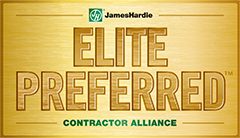How To Repair T111 Siding

Advertised as T1-11 or T-111 siding, this common siding has been used for decades on homes due to its low cost and its fast and easy installation. Unfortunately, T1-11 siding doesn't stand up too well to the elements, and over time will begin to deteriorate, opening your home up to damage from water, pests, and a host of other problems. There are, however, some steps you can take to help prevent damage to your home until your siding is able to be replaced with a more durable siding.
How to Know if Your Home Has T1-11 siding
If your home was built in the 60's, 70's, or early 80's, it's likely to have T1-11 siding. The natural wood-grained look made it a popular siding choice at the time. T1-11 siding, also known as OSB siding or T1-11 siding, is a type of plywood panel. They are often used to make a shiplap or rustic board-and-batten look on a home exterior. It can be painted, stained, cut, and arranged in different ways to create a variety of looks. T1-11 is available in both smooth or rough finishes, and comes in three different thicknesses: 3/8", 5/8", and 3/4".
The Most Common Issues with T1-11 Siding
- Moisture intrusion—T1-11 siding may look great, but typically it fails due to moisture damage. When OSB T1-11 gets wet, it swells, expands, and eventually flakes, chips, and rots.
- High maintenance—T1-11 lasts and keeps looking good only if it is well maintained. It needs to be properly installed, painted, stained, and sealed. It must be meticulously tended and kept sealed so it can protect your home from moisture damage. It needs to be stained every 3-5 years.
- Wrong uses—Some homeowners choose to install this siding on their roof and deck, causing problems beginning when it's installed.
- Absorbent edges—If T1-11 boards come into contact with the ground before installation, its highly absorbent edges may draw in moisture.
- Not eco-friendly—T1-11 adds to the overall carbon footprint of the homes it covers.
- Not fire resistant—The flammability of T1-11 ranks much higher than other siding materials like brick, stone, or fiber cement.
- Easily damaged—This siding tends to rot, warp, corrode, and mold when left untreated. Your home's curb appeal and value can be negatively impacted as a result.
- Needs frequent repairs—Not only does this siding require high maintenance, but it also has high repair needs. Damage can occur from the weather, woodpeckers, pests, or even fire. If you procrastinate repairing damaged T1-11 siding, additional problems can occur, leaving you with even more to repair. If problems are extensive, siding replacement becomes a better choice than repairs.
- Installation problems—When T1-11 isn't installed properly, your home may become exposed to additional moisture as gaps or loose panels hinder insulation and produce pockets for dampness to build up—leading to more extensive and costly damage. It should never be installed flush to the ground, as that type of contact may increase moisture buildup in the siding.
Tips for Dealing With T1-11 Siding Problems
Unfortunately, when old T1-11 siding begins to deteriorate, replacing it with a better product becomes the only long-lasting solution.
You can, however, help to keep any siding damage in check by simply:
- Caulking any large joints that open up
- Just make sure to NOT caulk the bottom of any panels to allow water to drain if it happens to get behind the siding
- Painting to prevent further damage
- While a coat of paint won't fix any damage, it can protect your home while you look for a more reliable siding option, and it will cover up some blemishes. Even if the spot you are painting is rotting, painting once it's dry will help prevent further moisture intrusion.
- Patching where needed
- If a section of siding is missing, leaving your home exposed to the weather is obviously not a good idea. You can put a temporary patch in place, caulk it, and paint it to protect your home for the short-term.
- Covering with tarps or plastic
- This is very much short-term, but if a large section of your T1-11 siding has come off due to storm damage or another cause, you can use plastic or a tarp to try and keep moisture out of the area as much as possible. Your best option here is to contact a reliable siding contractor to fix the problem.
In reality, though, the best and most cost-effective option for dealing T1-11 siding's problems is to replace it with something much more durable, like James Hardie.
James Hardie Fiber Cement: The Perfect Replacement for T1-11 Siding
While T1-11 is a functional siding, its high maintenance and tendency to attract moisture make it a hassle to care for. Save yourself the trouble of constant upkeep and repairs by choosing easy-to-maintain siding material that offers a lasting solution to T1-11 siding problems: James Hardie.
James Hardie siding is a great replacement for T1-11 siding. This beautiful, durable siding has an array of benefits over T1-11:
- Moisture resistant
- Fire resistant
- Low-maintenance
- Long-lasting
- Durable
- Eco-friendly

At Lifetime Exteriors, we install your James Hardie siding right the first time, so you get the long-term high performance you deserve from your new exterior. As a James Hardie Preferred Contractor, we will replace your T1-11 siding with James Hardie fiber cement according to the manufacturer's standards, so your 30-year warranty is honored as a result.
Learn about our James Hardie siding services today.
How To Repair T111 Siding
Source: https://lifetime-exteriors.net/why-replace-t1-11-siding-with-james-hardie/
Posted by: jacksonshenduch.blogspot.com

0 Response to "How To Repair T111 Siding"
Post a Comment